Complimentary worldwide shipping on orders over $400 · No import tariffs for most countries
Complimentary worldwide shipping on orders over $400 · No import tariffs for most countries
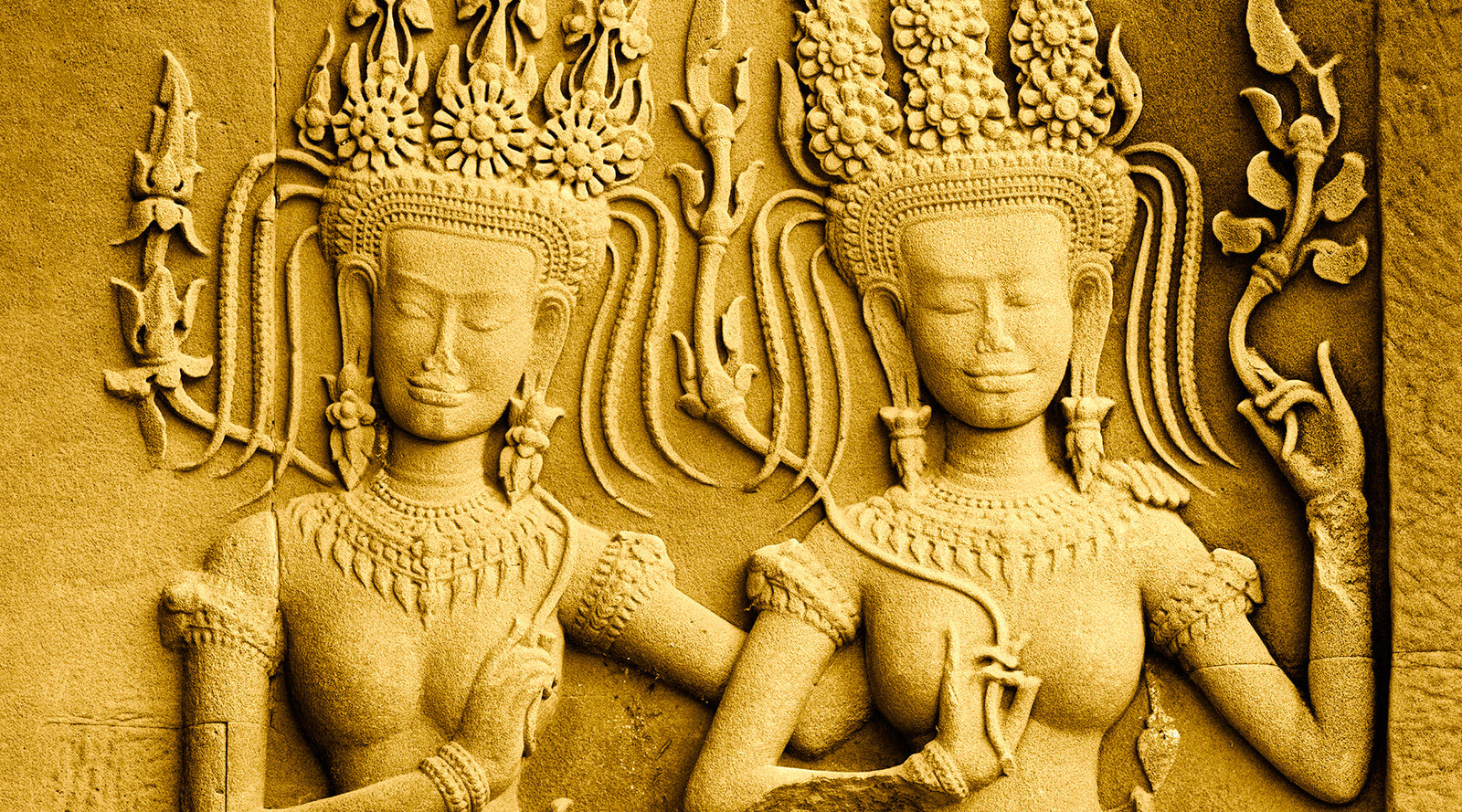
The Light That Became Remembering
The light was not fading.
It was remembering.
Evening gathered along the courtyard wall of Angkor Wat’s second level, as if reluctant to leave what it had once touched. Beneath the five central towers, the day’s final breath hovered. The jungle exhaled. Shadows softened. And before me—without motion, without sound—stood two devatas, carved not into stone, but into time.
They were nearly identical. Their lotus blossoms lifted in offering, their three-pointed crowns rising like memory. One reached across to rest her hand upon the other’s shoulder. It was not a gesture of possession, but of return. As though something given long ago was being received again.
Behind them, the wall remained unfinished—flat, silent, bare. And yet from that blankness, they had emerged, complete. Their presence felt less sculpted than summoned. Light did not strike them—it settled into them.
I stood in silence. The tripod was already placed. The film waited. I no longer did.
When the shutter opened, I did not think of the photograph. I thought of the moment—the exact stillness in which offering and remembrance become the same act.
What came to me later, in the darkroom, was not the exposure. It was the echo. The hand that touched the shoulder. The gaze that didn’t turn. The gold that didn’t shine—but stayed.
gold dusk in the court—
their hands remember the light
long after it leaves
Also in Library
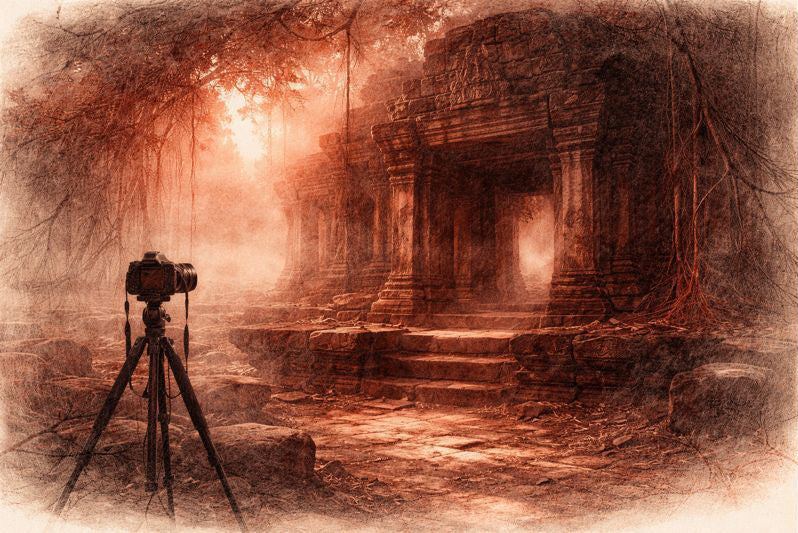
Before the Shutter Falls
3 min read
Before the shutter falls, fear sharpens and doubt measures the cost of waiting. In the quiet hours before dawn, the act of not-yet-beginning becomes a discipline of attention. This essay reflects on patience, restraint, and the quiet mercy that arrives when outcome loosens its hold.
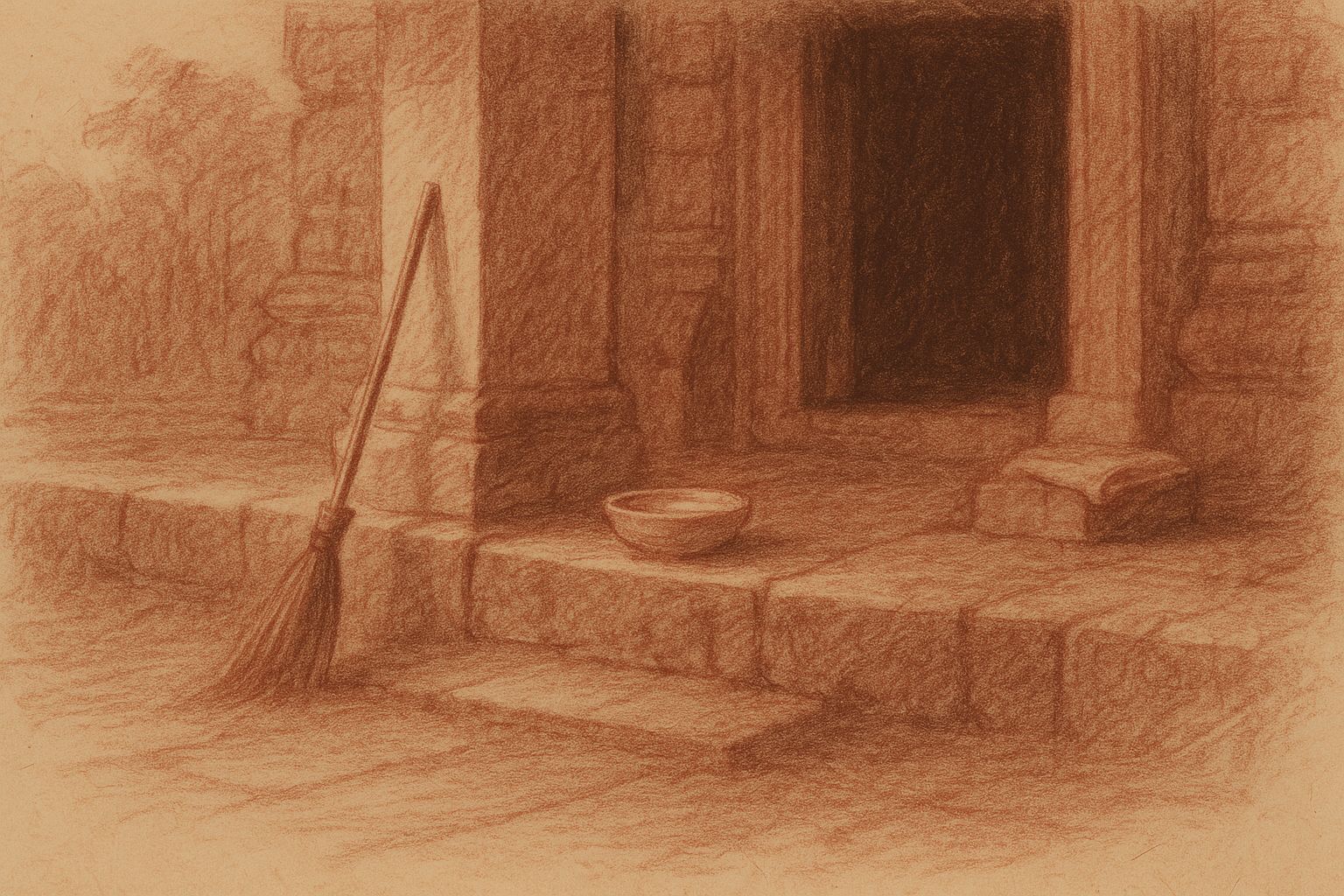
Those Who Keep the Way Open — On the Quiet Guardians of Angkor’s Thresholds
3 min read
Quiet gestures shape the way into Angkor — a swept stone, a refilled bowl, a hand steadying a guardian lion. This essay reflects on the unseen custodians whose daily care keeps the thresholds open, revealing how sacredness endures not through stone alone, but through those who tend its meaning.
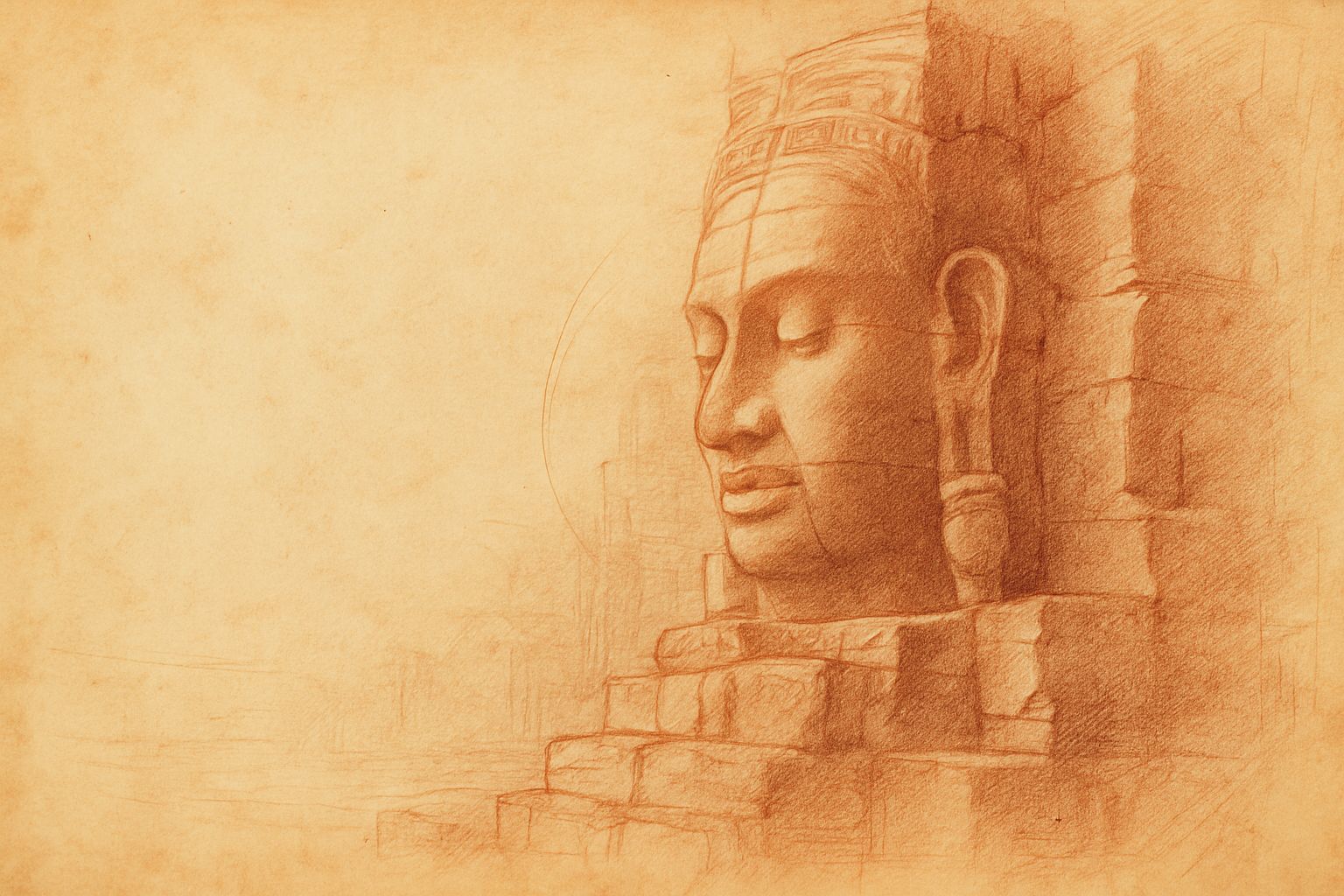
Multiplicity and Mercy — The Face Towers of Jayavarman VII
5 min read
A new vision of kingship rises at the Bayon: serene faces turned to every horizon, shaping a world where authority is expressed as care. Moving through the terraces, one enters a field of steady, compassionate presence — a landscape where stone, light, and time teach through quiet attention.
Angkor Wat Temple, Angkor, Cambodia — 2020
Limited Edition Archival Pigment Print
Edition
Strictly limited to 25 prints + 2 Artist’s Proofs
Medium
Hand-toned black-and-white archival pigment print on Hahnemühle Bamboo — a museum-grade fine art paper chosen for its quiet tactility and reverent depth, echoing the spirit of the temples.
Signature & Numbering
Each print is individually signed and numbered by the artist on the border (recto)
Certificate of Authenticity
Accompanies every print
Image Size
9.5 x 6.8 inches (24.1 x 17.3 cm)
At the threshold where light becomes memory, two devatas emerge from stone—graceful, entwined, and radiant in their stillness. This is not a moment captured, but one consecrated.
Carved high upon the unfinished sandstone of Angkor Wat’s second-level courtyard, the figures appear almost identical—twin sisters or mirrored selves—each lifting a lotus blossom in quiet offering. One reaches across to rest her hand upon the other’s shoulder, their embrace suspended in golden silence. The air was thick with the hush of evening, as if the day itself were bowing.
Lucas Varro waited for the light to find them. Using large-format black-and-white film, he made this image beneath the sun’s last breath. In the studio, the negative was shaped through chiaroscuro and hand-toned in gold—an act of reverence, not effect. Each print is unique, bearing the subtle fire of what the stone once held.
This museum-grade archival pigment print on Hahnemühle Bamboo paper is offered in a strictly Limited Edition of 25 + 2 AP.
No two impressions are alike. Each carries the light that stayed.
Click here to walk deeper into the artist’s journal—where silence remembers the offering.
Join My Studio Journal
Receive occasional letters from my studio in Siem Reap—offering a glimpse into my creative process, early access to new fine art prints, field notes from the temples of Angkor, exhibition announcements, and reflections on beauty, impermanence, and the spirit of place.
No noise. No clutter. Just quiet inspiration, delivered gently.
Subscribe and stay connected to the unfolding story.
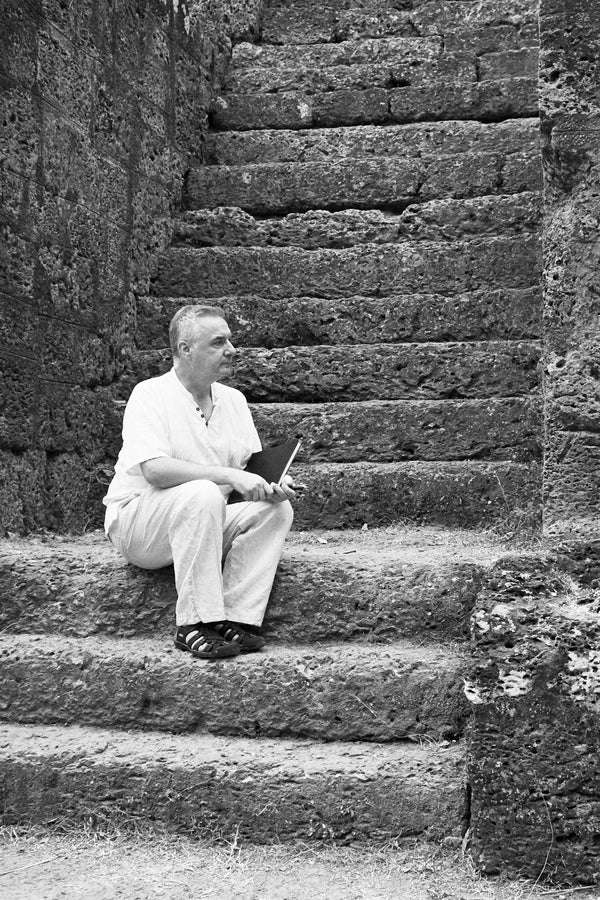
Join My Studio Journal
Receive occasional letters from my studio in Siem Reap—offering a glimpse into my creative process, early access to new fine art prints, field notes from the temples of Angkor, exhibition announcements, and reflections on beauty, impermanence, and the spirit of place.
No noise. No clutter. Just quiet inspiration, delivered gently.
Subscribe and stay connected to the unfolding story.

